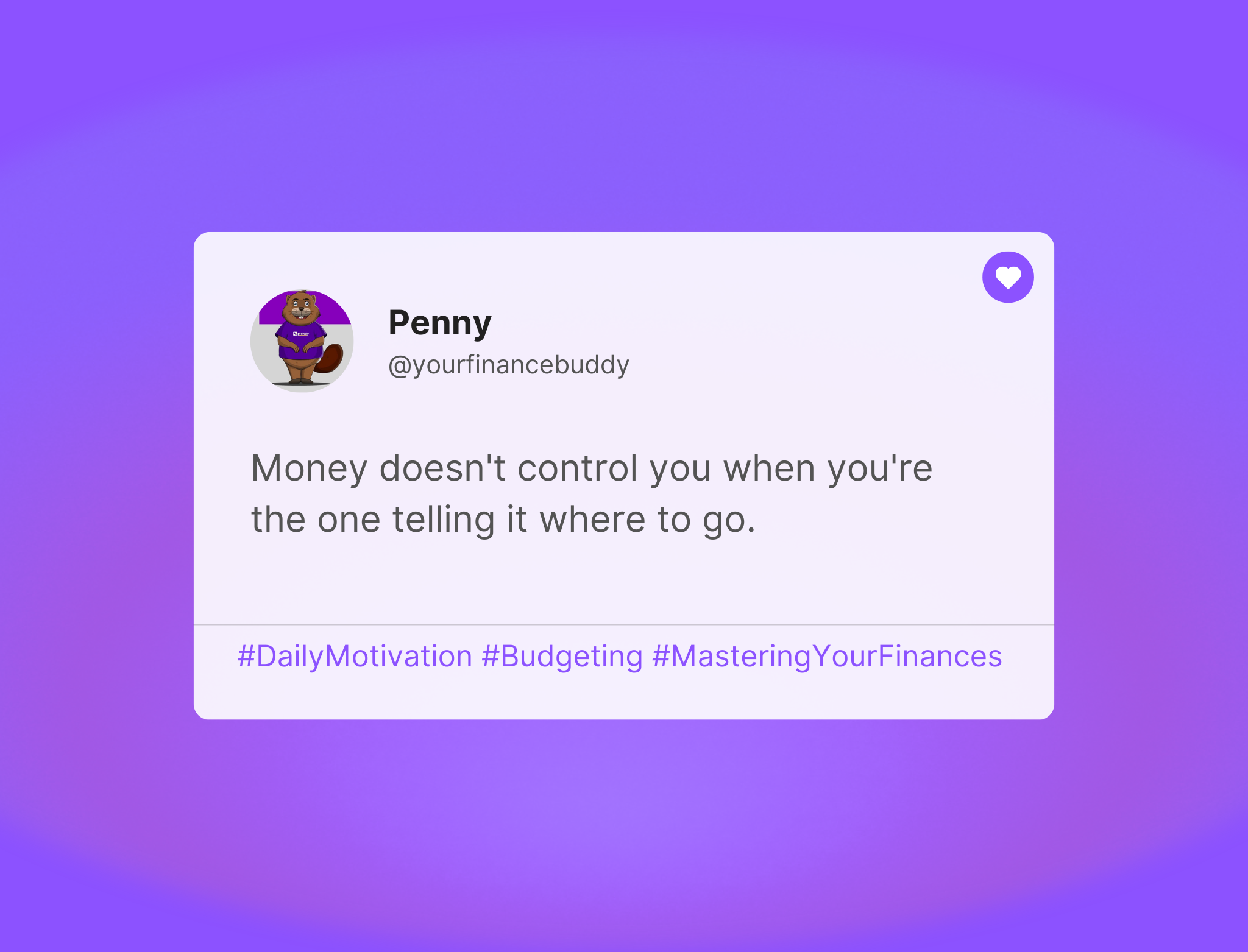Finance for Beginners: How To Budget
6 mins read
Published on Jul 23, 2024

Did you know? A staggering 86% of Americans believe they should use a budget, yet only 30% actually do. Interesting, right? This striking disparity demonstrates that people struggle with budgeting for different reasons, including the notion that it is time-consuming or because they've set unreasonable objectives for themselves.
It's very important to understand how to budget effectively, as it will help you take better control of your money. As a result, we've provided you with the foundational knowledge of budgeting so you can manage your finances properly. Of course, we added practical tips to follow so budgeting gets easier for you and you become a master at it in zero time.
Step One: Earnings
To create a budget, you have to establish how much you earn. That is, you'll need to consider passive and fixed income sources like your salary, payments from freelancing, or even returns on investments, among other income sources. Knowing precisely the amount of money that you are raking in each month provides the foundation necessary for budgeting.
Tip: If your income varies, for example, from freelancing, use an average over the last half a year to get a fair idea of where you are.
Step Two: Accounting
It is essentially important that you account for each and every penny spent. An easy way that we suggest is to divide your spending into fixed costs and variable costs. But first, you must know the difference between these two. To explain, fixed costs are those that are periodic or redundant. House rent, rent from a mortgage, utilities, and insurance are considered fixed costs, while variable costs generally are, for example, food, entertainment, dining out, or any other spending that you can decide not to have.
Tip: Leverage budgeting tools and applications. It will make tracking your expenses easier.
Step Three: Set Budget Goals
Setting clear-cut financial objectives definitely needs a well-prepared budget. It has been proven that setting clear goals increases your chances of sticking to your budget. Your goal for saving could be for a car, a trust fund for the children, settling existing debts, etc.

Tip: Create a short-, medium-, and long-term category for your goals so that you stay focused on what is really important and you're able to manage your funds efficiently.
Step Four: Your budget plan
We assume that you have a good idea of your income and expenses. So now it's your turn to design a budget for yourself. Allocate your income for the payment of all the expenses, but don't forget to add to your savings and investment plan. This is particularly useful when you use a monthly planner to manage your spending. There are also effective budget planning methods you can use. They are:
50/30/20 Rule
The 50/30/20 rule describes a simple way to structure your budget.
50% for needs: This means that 50% of your revenue goes to your needs, i.e., transport, groceries, and bills. For some people, it could be coffee and the like.
30% for wants: This means that 30% of your revenue goes for potential wants, that is, things you want to buy but do not really need. Most likely, this will be the money spent on your hobbies, online shopping, and eating out.
20% for savings: The rest of the 20% should be allocated to the repayment of debt or emergency fund money. This is a good method, as the proportion means that a balance can be easily assessed between spending the required money and having fun while still being able to plan for the future.
Zero-Based Budgeting
You should assume you have zero money in your account at the beginning of every month until your allowance or income arrives. Basically, the zero-based budgeting method demands that you number your costs and assign a purpose to every single dollar. That is to say, you watch every dollar that is spent, ensuring that everything gets covered. This will make sure that you make thoughtful judgments about how much to spend and save.
Envelope System
Let's break it down in three easy steps:
Categorize: First, identify what categories you are going to allocate your money toward. Let's say your groceries, transportation, and probably savings.
Envelopes: Label each one with the category's name.
Cash Allocation: Once you have your paycheck, divide it among those envelopes with the names corresponding to your spending plan. You're only allowed to spend what is inside that category's envelope until the following month. This will help and keep you on track, so you don’t go overboard with your spending.
Step Five: Use Budgeting Apps
For many people, budgeting can be very time-consuming and stressful. A suggested solution we have to this is to download good budgeting tools and applications onto your device. With them, budgeting becomes so easy, and you get to keep an eye on your spending. So you can find one that suits your taste and start working with it. We have four tips to help you with this.
Automate your savings: Put money into your savings account automatically. This will make sure you're saving consistently.
Cut unnecessary expenses: Find out the areas in your life where you spend unnecessarily, for instance, those midnight impulse buys or those subscriptions you haven't used in a minute.
Regular Review: Reviewing your budget regularly will ensure that it really meets your goals and needs and that adjustments are made whenever it's necessary.
Use Cash for Discretionary Spending: You cannot possibly fall into the trap of spending too much when you can visibly see money leaving your hands.
Step Six: Self-discipline and motivation
Having a budget entails discipline and consistency. Motivate yourself to budget by constantly reminding yourself of the numerous benefits that come with the package. Try to notice those small successes that you might have managed and pat yourself on the back for them.
Tip: When you join a financial community or find someone, you can both share insights, exchange experiences, and encourage one another.
Conclusion
Budgeting forms the very basis of acquiring financial independence. For a successful budget, you need to understand your income, be able to track where all the money goes, set some goals, and then apply some of the above efficient budgeting tips we've provided to make sure you are heading in the right direction to protect your finances. Just remember that budgeting is not about depriving yourself of wonderful things in life; rather, it entails spending sensibly based on your established financial priorities.
Last updated: Nov 28, 2024
Share this with your friends and family
Join the money party
Level up your financial game with our exclusive blog updates, delivered straight to your inbox
Other articles you might enjoy
Join the #1 banking app for the Commonwealth
Get started on Plently
Rosemary D.
Phia Consultants
It's like having the best financial partner in my pocket!

Jonathan G.
Open Space Inc
Plently has truly transformed my financial life.

Emily H.
Student
With their user-friendly interface and innovative tools, managing my money has become a breeze.

Margaret D.
Small Business Owner
I finally feel in control of my finances, thanks to Plently!

Alexander P.
Small Business Owner
After Plently, I can't imagine going back to traditional banking!

Oliver A.
Student
Being a part of a Money Circle has been a game-changer for me. It's not just about financial contributions; it's a supportive community working together towards shared goals





Loading comments...